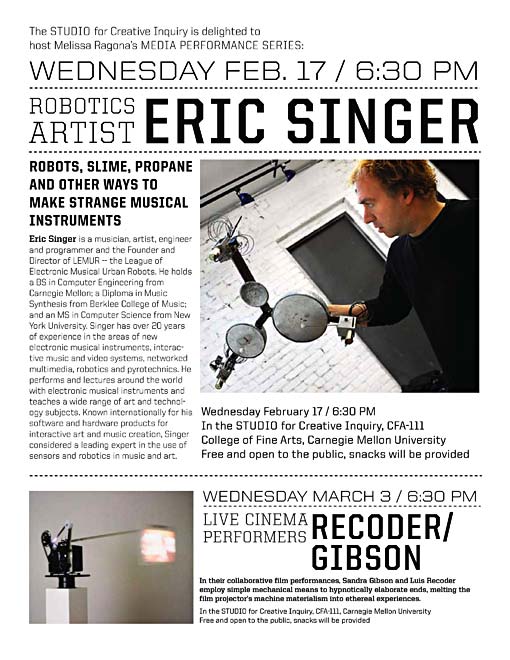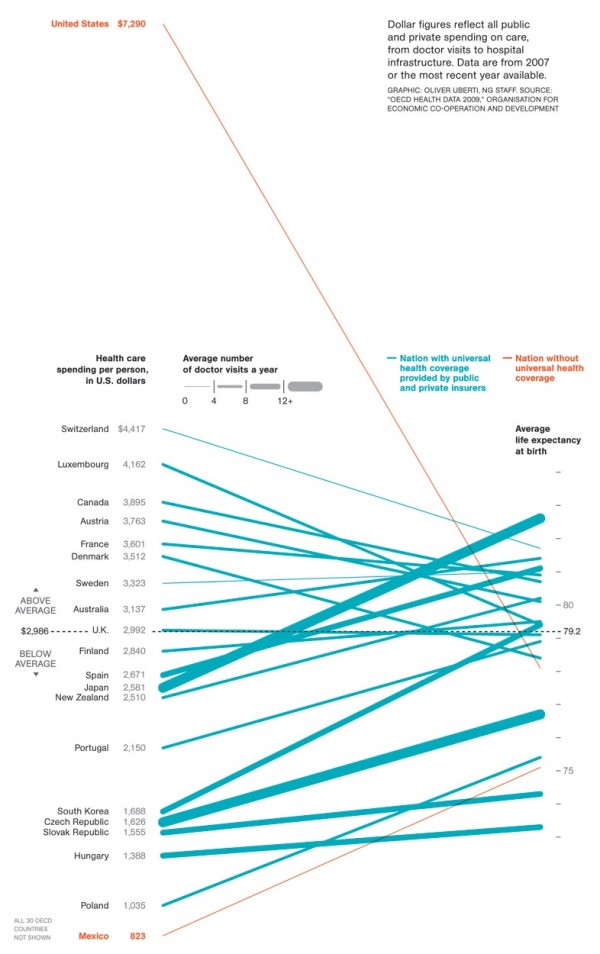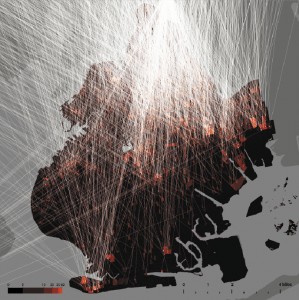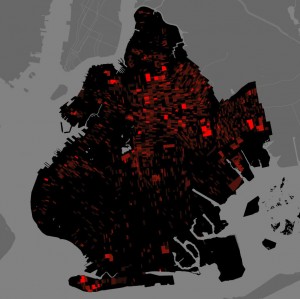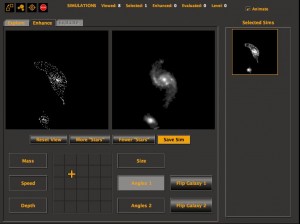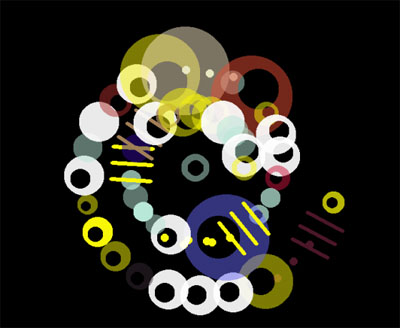Simulating Organic Behavior through Music
Music Visualization: Erection by The Faint
Music Visualization: I\’m a Lonely Little Petunia by Imogen Heap
Music Visualization: Time to Pretend by MGMT
Where the idea came from
When looking at examples of simulations during class, I was inspired by the work of Robert Hodgin. I was interested in the way he simulated organic behaviors that were directly responding to sound. I decided to create a similar project, using my own aesthetic and my own parameters.
My work process
The first step I took in developing this program was finding a library that could analyze sound. I found a library by Krister Olsson called Ess. This library “ allows sound sample data to be loaded or streamed (AIFF, WAVE, AU, MP3), generated in real-time (sine, square, triangle and sawtooth waves, white and pink noise), manipulated (raw or via built-in filters), saved (AIFF, WAVE), analyzed (FFT) or simply played back.” I used it to analyze the sound using Fast Fourier Transforms to isolate the volume components of each freuency.
After discovering this library, I found source code for two other projects that I used to help me program the project: Flocking by Daniel Shiffman and Input FFT from Olsson’s Ess library website.
After reading and understanding the code, I was able to use the basic ideas from these projects in my own work, merging, tweaking, and rewriting the code to fit my own vision.
My self-critique
Although I was happy with the results, there are a few things I would have done if I could work further.
First of all, my original intention was to have the boids flock with one another. However, I adjusted the boids’ velocities to match the frequencies volume in a way that made it difficult for me to figure out how to implement the flocking behavior.
A second change I would make would be to make the visuals appear more spatial. Although I am content with the current aesthetic, it is a bit flat looking.
Overall, I was extremely excited with this project and content with my results.

